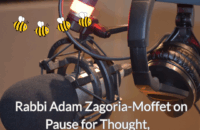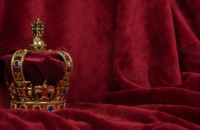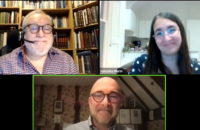A short history of the Masorti Movement

A History of the Masorti Movement in the UK
Masorti Judaism represents a dynamic and thoughtful approach to Jewish tradition—deeply rooted in heritage and open to modern scholarship. It has become a thriving force within Anglo-Jewry where many people are attracted to the attempt to preserve Jewish tradition against modernity’s extremes.
From Germany to the World: The Rise of Masorti Judaism
In the 19th century, a new Jewish movement emerged in Germany, seeking to balance tradition with modernity. Conservative Judaism, as it became known, offered a space between the new rigidity of Orthodoxy that was responding to the radical shifts of Reform. By the early 20th century, these ideas took hold in the United States, where they flourished, creating the largest Jewish denomination in the country by the mid-century.
In 1962, the movement expanded into South America, with a rabbinical school in Buenos Aires, and today, Masorti Judaism is the leading Jewish denomination in Argentina, Brazil, Venezuela, and Chile. Across the globe, the 1960s and 70s saw Masorti communities take root in Israel and beyond, including in the UK, where a dramatic event changed the landscape of British Jewry forever.
The Jacobs Affair: A Defining Moment for Anglo-Jewry
Until the 1960s, British Jews largely belonged to one of two movements: the Orthodox-led United Synagogue or the Reform movement. This changed in 1964 with what became known as the Jacobs Affair, a defining moment in UK Jewish history.
Rabbi Louis Jacobs, a rising star within the United Synagogue, argued in his 1957 book, We Have Reason to Believe, that Jewish texts should be open to modern scholarly analysis. This view was unacceptable to the Orthodox establishment, and in response, Jacobs was blocked from returning to his teaching post at Jews’ College and later removed from his pulpit at New West End Synagogue.
Refusing to abandon their rabbi, most of the New West End’s members resigned and founded New London Synagogue, an independent congregation committed to a Judaism that was both traditional and intellectually honest. This marked the birth of Masorti Judaism in the UK.
New North London Synagogue: Building a Community
In 1974, Michael Rose and Ivor Jacobs spearheaded the creation of a new community in Finchley. Sixty people gathered at Michael’s home, with Rabbi Jacobs setting a vision for a community based on a sense of quest and inquiry. A decade later, New North London Synagogue (NNLS) moved into the Sternberg Centre, growing into a welcoming and diverse hub of Masorti Judaism. Today, it remains committed to tradition while embracing a range of Jewish expressions, including a non-egalitarian Traditional Service alongside other minyanim.
The Pioneering Role of Chazzan Jaclyn Chernett
In the early 1980s, Jaclyn Chernett led an alternative minyan within Edgware Reform Synagogue, shaping what was, in essence, a Conservative-style service. Alongside Paul Marmott and Neil Kaufman, she established The Conservative Synagogue of North West London, offering traditional liturgy while fully including women.
To avoid confusion with the UK’s Conservative political party, they adopted the Israeli term Masorti (meaning “traditional”). Their community, later named Edgware Masorti Synagogue, became the UK’s first traditional-egalitarian congregation. In 1984, Chernett reached out to NNLS and New London Synagogue to create a formal association, leading to the formation of the British Assembly of Masorti Synagogues (now Masorti Judaism).
A Growing Force for Moderate Judaism
The Masorti movement continued to expand, welcoming St. Albans Masorti Synagogue in 1990—a community founded by three families seeking a vibrant, participatory Judaism. Meanwhile, Noam, the Masorti Youth Movement, was launched in 1988 by Cheryl Sklan and Rabbi Chaim Weiner, inspiring the next generation of engaged young Jews.
In 1993, Ha Kol Olin broke away within NNLS to become the first NNLS egalitarian minyan. They were soon followed by Assif, further expanding the diverse minyan options within the UK’s largest Masorti community. The movement’s footprint continued to grow, with Kol Nefesh emerging from a 2000 split in Edgware Masorti, and the 2021 merger of Edgware Masorti and Elstree & Borehamwood forming SHEMA.
New communities kept springing up: New Stoke Newington Shul in 2007, and more recently, Ohel Moed was established by a group of Noam Alumni. Hatch End Masorti Synagogue founded in the late 1990s, became Mosaic Masorti in Stanmore in 2022.
Masorti Judaism Today: A Thriving Movement
In 2012, the Assembly of Masorti Synagogues officially rebranded as Masorti Judaism, aligning with the global movement Masorti Olami, which represents around two million Jews worldwide.
Today, Masorti communities thrive across London (St John’s Wood, Finchley, Edgware, Hatch End, Stoke Newington), Hertfordshire (St Albans, Elstree & Borehamwood), Essex, Oxford, Leeds, and Liverpool. Interest continues to grow, with regular inquiries about forming new communities in cities across the UK.
Wherever you find a Masorti synagogue, you’ll find a community dedicated to tradition, intellectual engagement, and a commitment to inclusivity, learning, and meaningful dialogue. Masorti Judaism offers a home for those who love tradition and embrace the richness of modern Jewish thought—a place where you can bring your whole self, for your whole life.




